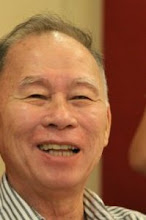This is in reaction to your April 14, 2012 column on “corporatization of public hospitals”. The answers to the questions you raised smacks of the government projections that have been peddled before the public for the last 20 years. In fact the five-stage broad strategy prepared by Dr. Nemesio T. Gako, DoH assistant secretary, show projections of hazy targets with progressive escalations until 2020 - way beyond the watch and therefore control of the present administration. Two huge PPP projects mentioned are –
- · The spanking new diagnostic building of the National Kidney Transplant Institute in Quezon City, where the interview was held, was said to cost P700-million and hopefully designed to compete with stand-alone networked private diagnostic facilities;
- · The P900-million Vaccine Self-Sufficiency Project, to be implemented through the Research Institute for Tropical Medicine, is likewise meant to compete with private vaccine suppliers.
Funding for these “wishful” strategies is seen to come from the implementation of the “sin tax” reform bill, whose revenues are also expected to escalate yearly.
It is obvious that what must go hand-in-hand with this “fresh” strategy is a firm change in the long-term leadership of the country and its institutions.
Our health reform can only be accomplished starting from barangay-level care and not by putting up isolated expensive monumental projects that can raise suspicions of unholy collusion with favored suppliers. The increased capitalization of PhilHealth to support the activities of regional medical centers, though important, should not take precedence over the all-important country-wide barangay level preventive, primary care.
Meanwhile, following India’s lead, our young entrepreneurs, who developed their skills in Western companies, are building a software program that runs on the cheapest cellphones that will offer even illiterate farmers a voice or text advisory program that can be used to efficiently network ground level health units. Our techies can adapt the models already being used in other countries, where all the units, all the centers, are linked through a switched hub to a central server, and all the images are populated to review stations. A working telemedicine solution model designed by the Heart Institute of the Caribbean (HIC) is also available upon request.
At this time, it is best to closely look at what the Philippine Institute of Traditional and Alternative Health Care (PITAHC) is currently doing and to use government’s limited resources to ensure success in its main mandate that includes undertaking research and development activities in lucrative still-untapped areas of traditional and alternative health care. The manufacturing and distribution of developed marketable products should be left to the organized private sector producers, who are well-versed in the role of marketing and promotions.
With more than 1,000 species of plants that are believed to have medicinal properties, the Philippines has the potential to become one of the world’s leading producers and exporters of herbal medicines and cosmetics. Currently, Thailand is lording it over the field.
In the global market, herbal medicine is now over a $100-billion industry and is growing at a clip of 20 percent annually while the herbal cosmetics sector is estimated to be worth $50 billion with the increasing demand for non-chemical cosmetics and aromatherapy products.
In the global market, herbal medicine is now over a $100-billion industry and is growing at a clip of 20 percent annually while the herbal cosmetics sector is estimated to be worth $50 billion with the increasing demand for non-chemical cosmetics and aromatherapy products.
Over the past 40 years, China has leaped past the Philippines, for only one reason: predictable, better, more focused, more idealistic, better organized nationalistic leadership. Our other regional peers have also overtaken us. There can only be one logical conclusion: three of the country's four immediate past leaders have been accused of corruption, of putting themselves before the nation. And many of the people below them have followed suit and joined the bandwagon. Even now, after over a year of paving “Daang Matuwid”, there are still hold-overs to the crooked paths. So the Philippines is now lost in the Scarborough Shoal.
Can we Filipinos truly care for our country, not for ourselves? After 333 years under the Friars and 45 years under Uncle Sam – almost 400 years as a colony – it is expected that we would want to think only of our stomachs and protect our families. But 113 years of colonial mentality hangover is surely enough for Filipinos to realize that this is our country now and we must care for it - genuinely care for it – in action, not empty words.
Can it be made to surface again? Can we get a set of truly patriotic leaders? This is the challenge for President Noynoy Aquino. It is a challenge he appears to have accepted, but can he bring the bureaucracy along with him?
This is his real challenge. Can he repair the damaged culture at all levels and thus re-establish the trust of the citizenry on the establishment?


